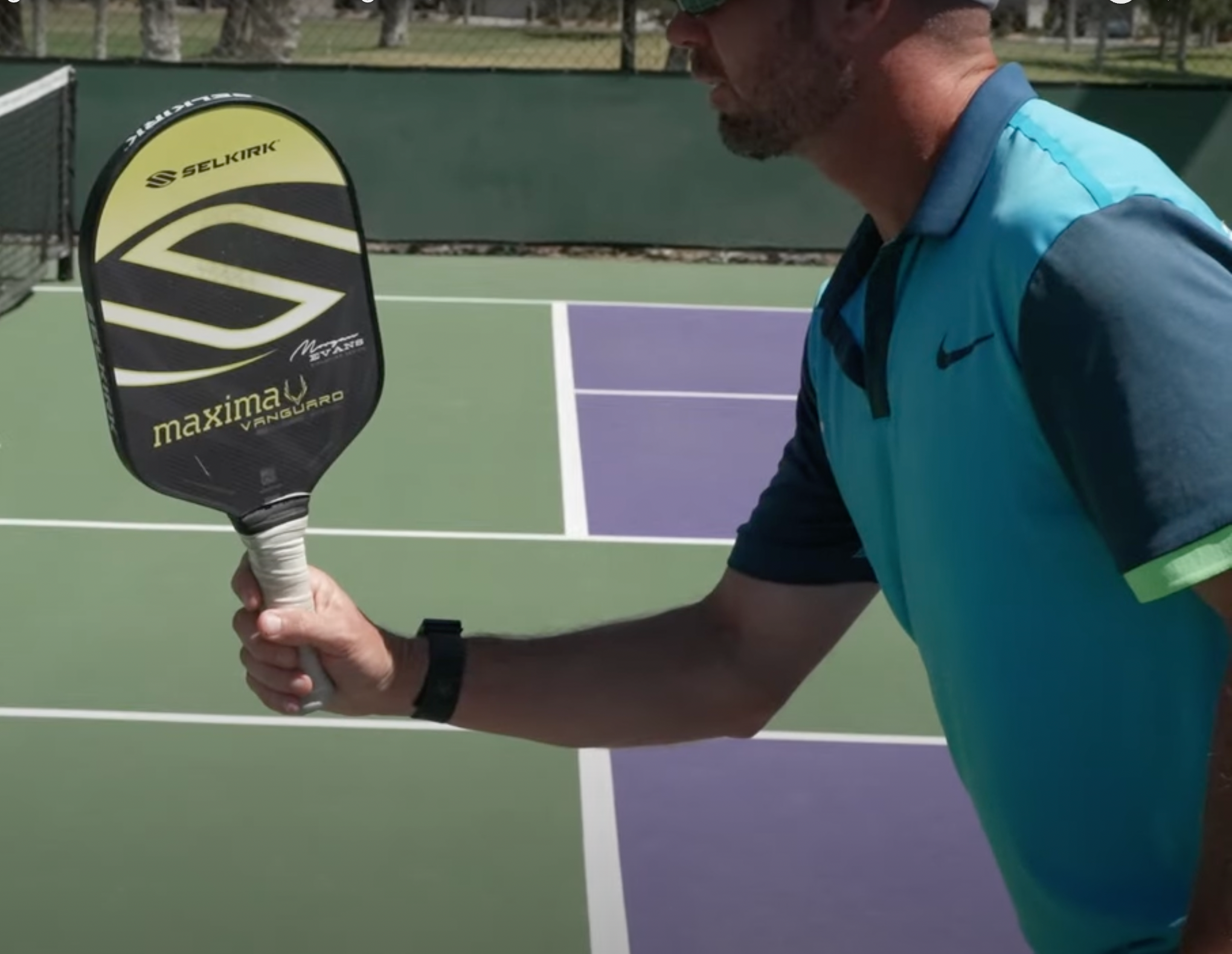
One of the most common questions among new pickleball players is, “How should I hold my pickleball paddle?”
Paddle position is a crucial part of pickleball, especially when on the defensive. But the truth is, the answer is different depending on where you are positioned on the court.
Knowing where to hold your paddle depending on your court positioning can make all the difference to help win points.
In this Selkirk TV original, pickleball coach Morgan Evans gives viewers tips on how to hold the paddle in different positions on the court.
How to hold the paddle at the kitchen line
When you’re at the kitchen line, your paddle position should be high enough to quickly defend your body from being attacked by any volleys.
This height looks different for everyone because each player needs to find a height that allows them to both defend and attack the ball. Generally speaking, holding your arm at waist height is best.
This is because there’s a difference between holding your paddle and having your entire arm raised. When your arm is at waist height, you can cock your wrist up to raise your paddle higher when necessary.
Where to hold the paddle in the transition zone
Now let’s say you’ve accidentally popped the ball up and need to back off the kitchen line. As you move back into the transition zone, it’s time to drop your paddle.
But how far you drop the paddle correlates to how far back in the transition zone you are.
If you’ve only had to back up a few steps, your feet will not be as exposed to an attack. So, your paddle can drop only slightly lower than at the kitchen line. However, you should bring the paddle closer to your body so that you can effectively reset the ball.
If you have to retreat further into the transition zone, drop your paddle lower, to about knee height. From this position, you can better track balls that are traveling quickly. This will help you get under your opponent’s attack at your feet or even see whether a volley may be traveling out of the court.
From this position, you may also want to consider showing more of the backhand side of your paddle. While not as strong as your forehand side, your backhand side can cover more area and have more loft to reset the ball.
Download the Selkirk TV app HERE to watch the complete episode and many other Selkirk TV original shows, podcasts, lesson series from the pros, and much more.




















